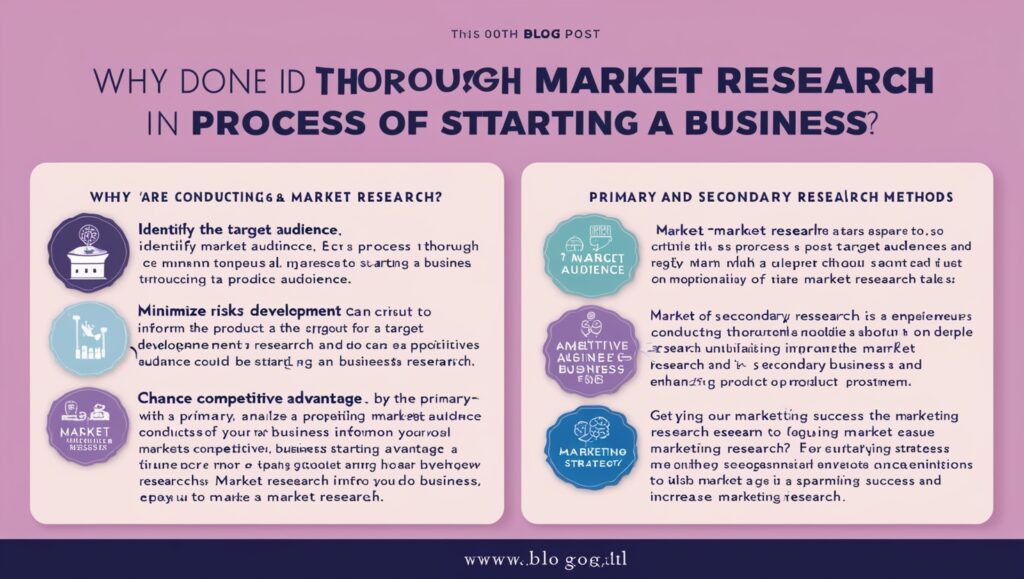The Importance of Market Research Before Starting a Business
Embarking on a new business venture is an exciting yet challenging journey. Whether you’re launching a startup, introducing a new product, or expanding an existing business, thorough market research is a critical step that can significantly influence your chances of success. In this blog, we will explore the importance of market research, the various methods to conduct it, and how to effectively leverage the insights gained to make informed business decisions.
Understanding Market Research
What is Market Research?
Market research is the systematic process of gathering, analyzing, and interpreting information about a market, including information about the target audience, competition, and industry trends. This process helps entrepreneurs and businesses understand the landscape in which they operate, identify opportunities, and make data-driven decisions.
Why is Market Research Important?
- Identifies Target Audience: Understanding your target audience is essential for any business. Market research helps you identify who your potential customers are, what they need, and how they prefer to shop. This insight enables you to tailor your marketing strategies and product offerings to meet their demands effectively.
- Minimizes Risks: Starting a business involves inherent risks, but thorough market research can mitigate these risks by providing you with valuable information about market trends, customer preferences, and competitive dynamics. By identifying potential challenges early on, you can develop strategies to address them.
- Informs Product Development: Market research provides insights into what products or services are in demand and helps you identify gaps in the market. Understanding customer needs allows you to develop offerings that resonate with your audience and meet their expectations.
- Enhances Competitive Advantage: Knowing your competitors’ strengths and weaknesses enables you to differentiate your business in the marketplace. Market research helps you understand how your competitors operate, what they offer, and how you can position your business to stand out.
- Guides Marketing Strategies: Effective marketing relies on understanding your audience and how to reach them. Market research provides insights into the most effective channels, messaging, and tactics to engage your target market, ultimately driving sales and brand loyalty.
Conducting Market Research
Primary Research
Primary research involves collecting first-hand data directly from your target audience. Here are some common methods:
- Surveys and Questionnaires: Designing surveys to gather quantitative and qualitative data can help you understand customer preferences, behaviors, and pain points. Tools like Google Forms or SurveyMonkey can facilitate this process.
- Interviews: Conducting one-on-one interviews with potential customers can provide deeper insights into their motivations and experiences. This method allows for more in-depth discussions and nuanced feedback.
- Focus Groups: Bringing together a small group of people from your target audience for a guided discussion can help you gather diverse perspectives on your product or service. Focus groups can reveal insights that surveys might miss.
- Observations: Observing customer behavior in relevant environments (like retail spaces) can provide insights into how they interact with products and make purchasing decisions.
Secondary Research
Secondary research involves analyzing existing data and information collected by others. This can include:
- Industry Reports: Research firms and industry associations often publish reports that provide valuable insights into market trends, consumer behavior, and competitive landscapes.
- Government Publications: Economic data, census information, and business statistics can be sourced from government websites, providing a macro view of the market.
- Academic Journals: Research studies published in academic journals can provide insights into consumer behavior and market trends.
- Online Resources: Utilize online databases, news articles, and blogs to gather information about your industry, competitors, and target market.
Analyzing and Interpreting Data
Once you have gathered data through primary and secondary research, the next step is to analyze and interpret the findings. Here are some tips:
- Identify Patterns and Trends: Look for common themes, trends, and patterns in the data that can inform your business strategy. This may include customer preferences, market demands, and potential challenges.
- Segment Your Audience: Use the data to segment your target audience based on demographics, behaviors, and preferences. This will help you tailor your marketing and product strategies to each segment.
- Compare with Competitors: Analyze your findings in the context of your competitors. How do your potential customers perceive them? What gaps exist in the market that your business can fill?
- Make Data-Driven Decisions: Use the insights gained from your research to inform your business decisions. This could involve refining your product offering, adjusting your pricing strategy, or identifying the most effective marketing channels.
Final Thoughts
Market research is an essential component of launching and running a successful business. By investing time and resources into understanding your market, target audience, and competition, you can make informed decisions that increase your chances of success. Not only does market research minimize risks and enhance your competitive advantage, but it also ensures that you are meeting the needs of your customers effectively. As you embark on your entrepreneurial journey, remember that knowledge is power—leverage market research to navigate the complexities of the business landscape and build a thriving enterprise.
Taking the time to understand the market will not only provide clarity on your business strategy but will also position you for sustainable growth and success in the long run.

